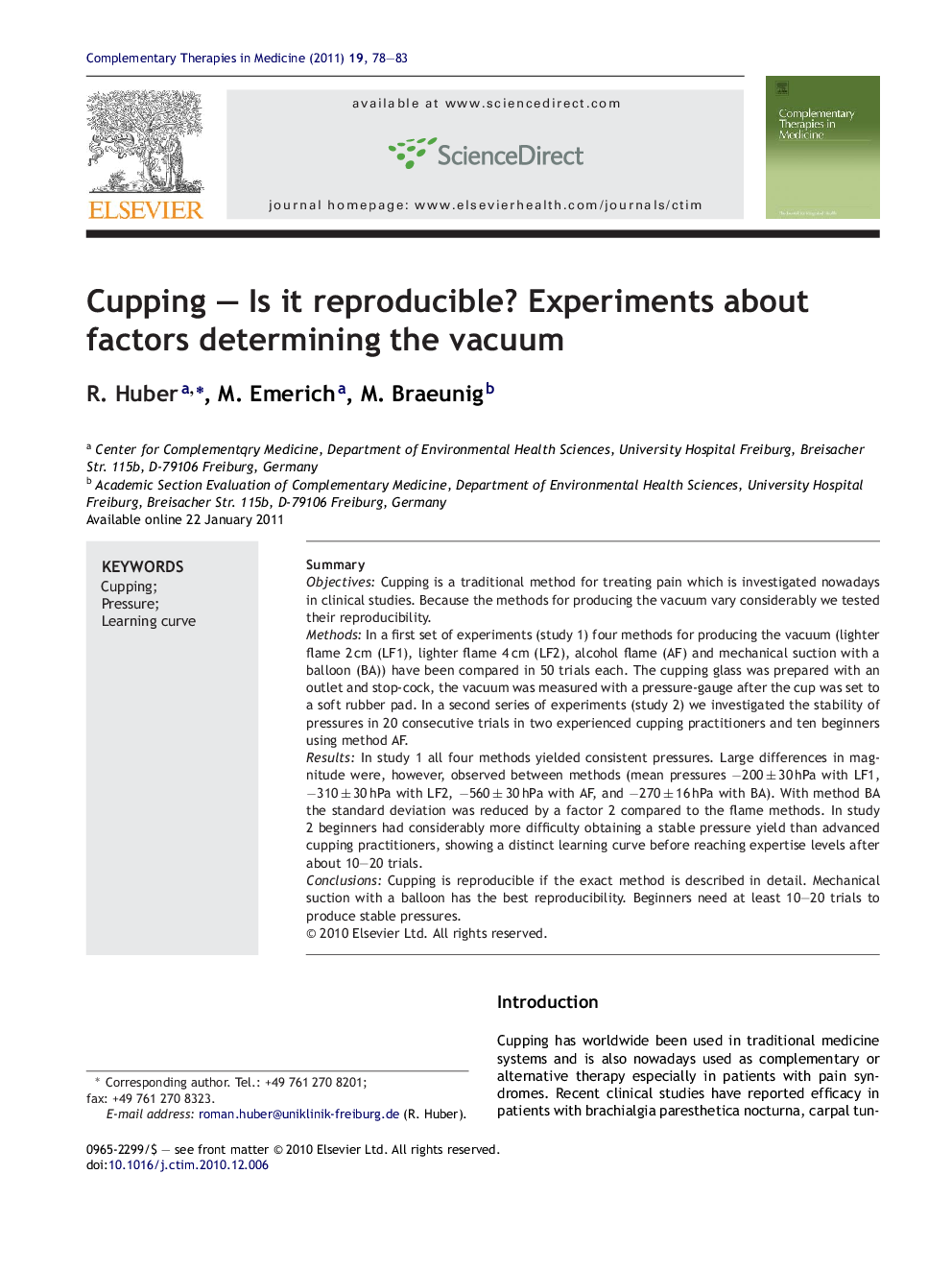| Article ID | Journal | Published Year | Pages | File Type |
|---|---|---|---|---|
| 2629019 | Complementary Therapies in Medicine | 2011 | 6 Pages |
SummaryObjectivesCupping is a traditional method for treating pain which is investigated nowadays in clinical studies. Because the methods for producing the vacuum vary considerably we tested their reproducibility.MethodsIn a first set of experiments (study 1) four methods for producing the vacuum (lighter flame 2 cm (LF1), lighter flame 4 cm (LF2), alcohol flame (AF) and mechanical suction with a balloon (BA)) have been compared in 50 trials each. The cupping glass was prepared with an outlet and stop-cock, the vacuum was measured with a pressure-gauge after the cup was set to a soft rubber pad. In a second series of experiments (study 2) we investigated the stability of pressures in 20 consecutive trials in two experienced cupping practitioners and ten beginners using method AF.ResultsIn study 1 all four methods yielded consistent pressures. Large differences in magnitude were, however, observed between methods (mean pressures −200 ± 30 hPa with LF1, −310 ± 30 hPa with LF2, −560 ± 30 hPa with AF, and −270 ± 16 hPa with BA). With method BA the standard deviation was reduced by a factor 2 compared to the flame methods. In study 2 beginners had considerably more difficulty obtaining a stable pressure yield than advanced cupping practitioners, showing a distinct learning curve before reaching expertise levels after about 10–20 trials.ConclusionsCupping is reproducible if the exact method is described in detail. Mechanical suction with a balloon has the best reproducibility. Beginners need at least 10–20 trials to produce stable pressures.
